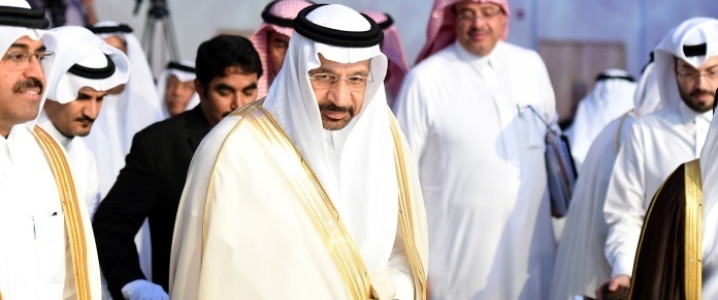Saudi Arabia pumped 10.1 million bpd of crude in February, a Saudi official told S&P Global Platts on Friday, in yet another sign that OPEC’s largest producer and de facto leader is cutting much deeper than it had pledged under the OPEC+ production deal that began in January.
Under the OPEC/non-OPEC deal for a total of 1.2 million bpd cuts between January and June, Saudi Arabia’s share is a cut of 322,000 bpd from the October level of 10.633 million, to reduce output to 10.311 million bpd.
At the end of January, Saudi Energy Minister Khalid al-Falih told Bloomberg that Saudi Arabia’s February crude oil production would likely be close to 10.1 million bpd, down from around 10.2 million bpd for January.
In an interview with the Financial Times in February, al-Falih said that the Saudis would further cut production to around 9.8 million bpd in March, some 500,000 bpd below the commitment in the OPEC+ deal. Al-Falih also said that Saudi Arabia would be cutting its crude oil exports to near 6.9 million bpd in March, slashed from 8.2 million bpd just three-four months ago.
In their push to rebalance the oil market and firm up oil prices, the Saudis are also significantly reducing exports to the most transparently reported oil market, the United States. Saudi Arabia’s crude oil exports to the U.S. are falling sharply, with shipments standing at just 1.6 million barrels near the end of February, according to U.S. customs data compiled by Bloomberg, versus 5.75 million barrels a year ago. Related: Is This As Good As It Gets For Oil?
For the whole of January, Saudi Arabia exported just 2.69 million barrels of crude to the United States.
OPEC’s production dropped to a four-year low in February, helped by Saudi Arabia and its Arab Gulf allies overachieving in their shares of the cuts, the monthly Reuters survey showed last week.
Official figures by OPEC and its secondary sources in the Monthly Oil Market Report (MOMR) showed that total OPEC production in January—the start of the new cuts—dropped by 797,000 bpd to average 30.81 million bpd. Saudi Arabia slashed production by 350,000 bpd from December to 10.213 million bpd in January, and its Arab Gulf allies Kuwait and the United Arab Emirates (UAE) also cut output substantially.
OPEC will release its figures for the February production next Thursday, March 14.
By Tsvetana Paraskova for Oilprice.com
More Top Reads From Oilprice.com:
- Local Gas Shortage Threatens Australia’s LNG Dream
- Saudi Oil Minister: Aramco IPO On Track For 2021
- Should We Rethink Nuclear Power?


















The Saudis have also been drastically cutting their oil exports to the United States because they realize that their exports will only augment US crude oil inventories which the Americans will later use to manipulate oil prices against Saudi and OPEC national interests.
And despite stiff opposition from bearish elements in the global oil market, bullish influences will eventually prevail with oil prices surging beyond $80 a barrel this year based on improved market conditions.
The same global market fundamentals that pushed prices to $87 in November last year even at the height of the trade war between China and the US still exist and as robust but with more promise.
Since then, three bullish factors have been at play. One is strong indications of the imminent end of the trade war. A second factor is that the OPEC+ production cuts and the strict adherence by the producers are effectively reducing the glut in the market with the possibility that OPEC+ could extend the production cuts to the end of the year if needed to ensure that the market becomes irrevocably balanced. A third factor is Saudi Arabia’s unwavering determination to get oil prices beyond $80.
Two important observations are worth noting however. One is a noticeable correlation between announcements by the US Energy Information Administration (EIA) of a build in US crude oil and product inventories and surges in oil prices. Observers could not fail to realize that the alleged build is aimed at depressing oil prices. However, the global oil market is starting to discount the EIA claims.
The other observation is that President Trump’s tweets have no impact on oil prices whatsoever if Saudi Arabia doesn’t play ball. Saudi Arabia will never repeat the serious mistake it made last June when it allowed itself to be conned by President Trump to raise its oil production to offset a would-be-decline in Iran’s oil exports as a result of US sanctions. This ended up with the Trump administration issuing sanction waivers to eight countries to continue buying Iranian crude leading to a 43% decline in oil prices from $87 to $50. As it happened, the sanctions have so far failed to cost Iran the loss of even a single barrel of oil.
Dr Mamdouh G Salameh
International Oil Economist
Visiting Professor of Energy Economics at ESCP Europe Business School, London